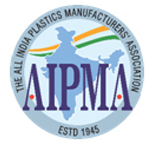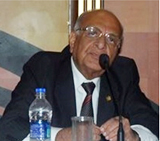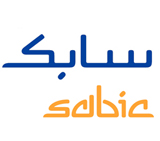PET for pharma: a boon or a curse? – An interview with PCMA President Biswajit Ghosh
|
Interview of Mr. B. Ghosh (BG) with Lekhraj Ghai (LG):
LG: What are your thoughts on the proposed ban on the use of plastic containers for packaging of pharmaceutical products such as syrups and liquid orals?
BG: PET is chemically inert, non-toxic and safe for food-contact packaging as per testing of specific and overall migration limits set for food, beverages and pharmaceutical packaging. It is to be noted that the current gazette is only a draft notification in regards to the usage of PET bottles and there is NO ban in place, as is being circulated. PET bottles, which are widely used for pharma products in many countries, are tested as per global standards. It is no wonder that bottles made from this versatile, convenient, safe and eco-friendly PET plastic are used for packaging medicines for paediatric, geriatrics and pregnant women by the world's biggest and best pharmaceutical companies. It is worth noting that some of these pharma MNC's find a place in the "Global 10" list and are known to care for the health-wellness of human beings. Thus, the news circulating against "PET for Pharma packaging" is purely based on misinformed assessment of the facts, to say the least.
LG: Considering that the concerns are particularly for PET, is there any other plastic product that could appropriately replace PET in pharmaceutical packaging? Or is glass the only alternative?
BG: PET has today created a niche for itself in the pharma industry owing to the unique set of advantages it provides to the product packaged. It is true that PET started as replacement for glass in the pharmaceutical industry in the early 90's; however, today it is the first material of choice for any new product or product extensions launched. In fact, there have been recent developments in special grades of PET raw material to be used even for oxygen-sensitive pharma molecules, where glass has been traditionally used.
As you might be aware, packaging of pharmaceutical products has undergone a sea change with constant evolution over the last few decades. For instance, Lami Tubes have replaced Lead Tubes and Polymeric Blister Packs have replaced Metallic Blisters. Similarly, PET bottles have well replaced glass bottles, at least in the packing of the majority of oral liquids.
LG: What is the current strength of PET containers manufacturers in India? How many of these supply to pharmaceutical companies?
BG: In India there are more than 1500 PET converters and around 20% of them primarily supply to the pharma sector.
LG: What benefits of PET and other plastics as packaging material counter the claims of longer shelf-life and 100% recyclability of glass?
BG: There are broadly seven types of plastics and each one of them is denoted with an individual recycling code. PET is a 100% recyclable material with the recycling code of "1" and the recycled bottles in India are used for non-bottle applications like fibre and strapping. PET is one of the most eco-friendly plastic materials available and is 100% recyclable.
LG: If the Government proceeds with this, what is the estimated loss that will be borne by PET manufacturers and PET processors in India?
BG: Out of the 700 KTA of PET used in India, the pharma sector accounts for around 15% and thus the turn-over loss that will be borne by PET manufacturers and PET processors in India would be to the tune of Rs. 1,500 crore only directly for this end-use sector. There would be obvious fall-outs for the vendor industry too.
LG: Could you enlist the major manufacturers of machines for the PET industry in India? What is the total strength of PET machine manufacturers in India? How big is this industry in monetary terms? What could be the loss borne by this industry due to the ban?
BG: The major manufacturers of PET machines are ASB, Husky, Sidel and Aoki among others. ASB holds the major share of PET machines used for the pharmaceutical industry. There are around 700 systems in India and around 50 new machines are added every year in pharma. The current investment in PET machines, moulds and anciliary equipment supplying to the pharma sector is to the tune of Rs. 500 crore. The investment in one sytem varies from Rs. 1 crore to Rs. 3 crore depending on the machine–mould combination. It is to be noted that PET usage in the pharma industry is growing at the rate of 15% per year.
LG: The recent cancellation of government price caps on 108 expensive and widely prescribed medicines is expected to result in an escalation in the prices of those medicines. In addition, the substitution of plastics with glass as the packaging material could also result in a rise in the prices of medicines. According to you, what will be the compounded impact on consumers?
BG: The substitution of plastics with glass as the packaging material would result in an increase of packaging cost by at least 20% and this could also result in a rise in the prices of medicines. In regard to the cancellation of government price caps on 108 expensive and widely prescribed medicines, the likely effect would vary as per the different product categories and that would decide the compounded impact on consumers. In addition, as glass is more centralized in geographical locations, this would also lead to increase in over-all SCM costs if PET bottles are replaced by glass bottles.
LG: Considering the widespread criticism for this move by the government, what steps should the plastics industry collectively take to persuade the government to reconsider?
BG: We are already on this job and not only the plastics industry but also the medical fraternity has joined hands to bring in a holistic approach to this issue. Various reputed national level pharma and plastics associations including IDMA (Indian Drug Manufacturers Association), OPPI (Organsiation of Pharmaceutical Producers of India), FOPE (Federation of Pharma Entrepreneurs), AIPMA (All India Plastic Manufactures Association), OPPI (Organisation of Plastic Processors of India), PCMA (PET containers Manufacturers Association) among others, have made representations to DTAB, DGHS, MoH&FW and others from 2013.
In light of the above facts, we would request the Government of India to involve a polymer science expert from a highly reputed institution like UDCT (Mumbai) and IIT (Delhi) to conduct scientific studies on the subject matter of the packaging of pharmaceuticals in PET bottles. The proposed notification should be then kept in abeyance until such scientific study involving subject experts are concluded. In addition, we would suggest the simultaneous identification of an internationally accredited analytical lab with experience in analyzing the chemical contaminant profile originating from the "Plastic Product Interface" (PPI) during the packaging of pharma products.
END
For further information, commentary and interviews, please contact us on +(91-22) 61772000 and info@polymerupdate.com
ABOUT POLYMERUPDATE

POLYMERUPDATE is an online destination for the plastics and petrochemical industry, which specializes in providing market- moving information and pricing data on petrochemical products and industrial polymers. Global players seeking polymer market
intelligence rely on the real-time news and price alerts provided on POLYMERUPDATE for making informed business-critical decisions. POLYMERUPDATE covers a whole spectrum of products such as Crude oil, Naphtha, Aromatics, Olefins, Polyolefins and Petrochemical Intermediates. With almost two decades of extensive experience in garnering and providing business-critical content, POLYMERUPDATE has expanded its readership to more than 60 countries in the world and its pricing methodology is considered as a benchmark across South Asia. POLYMERUPDATE interviews and articles are a rich source of information on the latest trends in the chemical and petrochemical industry.
Visit POLYMERUPDATE on the internet at www.polymerupdate.com
Sign up for our newsletters
More like this

Quality upgradation and skill development crucial for plastics growth – An interview with AIPMA President Rituraj Gupta Read More

Apex plastics body AIPMA urges government to reconsider PET ban – A POLYMERUPDATE special report Read More

PlastIndia move official, Counsil explains bold decisions - An interview with NEC Chairman J.R. Shah Read More

SABIC in India - A new era of strategic partnership Read More

Commodities Exchange: A new beginning – Q&A with Ian Wright of DGCX on plastics futures trading Read More




